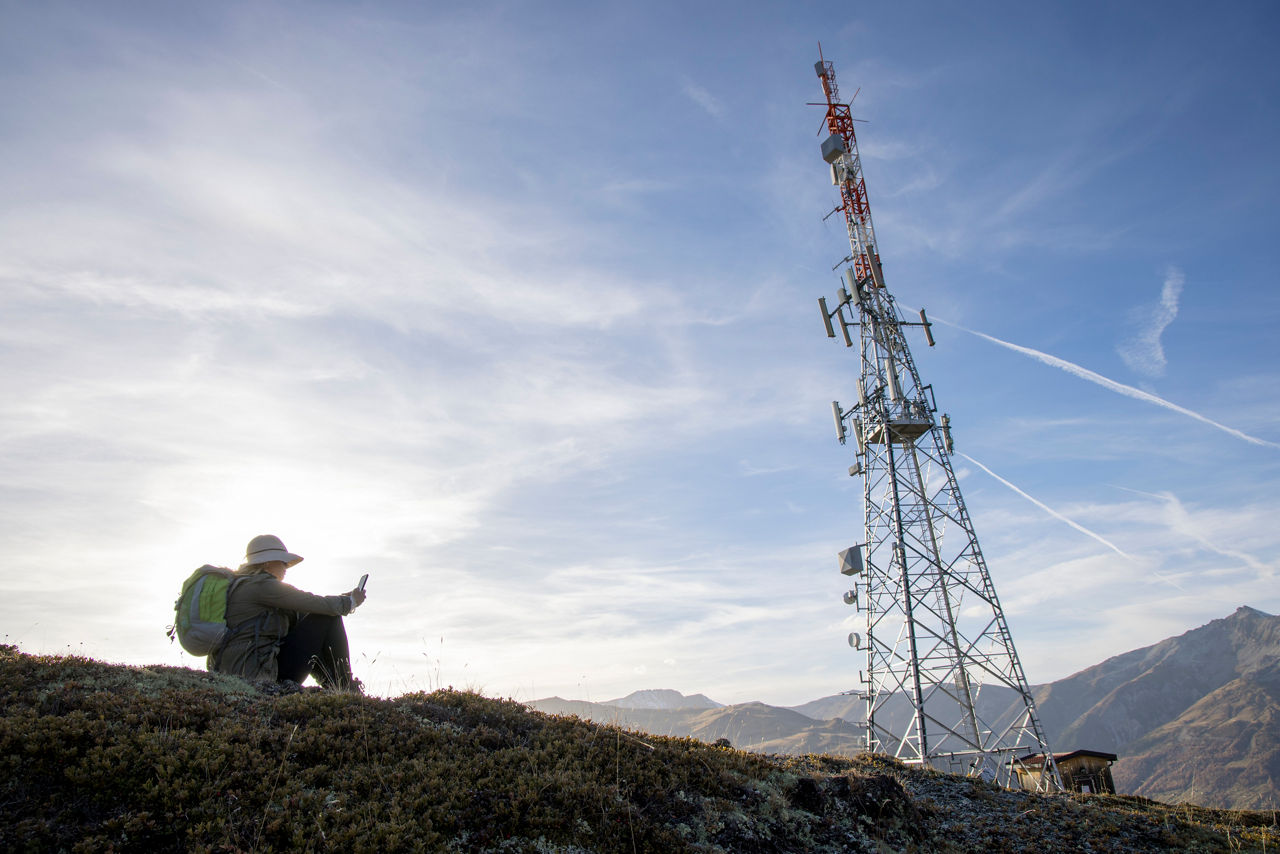Features and Benefits
Telecom providers face the need for increasing bandwidth and reliability, making it necessary to add versatile and high-performance infrastructure. To accomplish this, connectivity solutions at the tower must streamline design, installation and maintenance processes to save costs and accelerate deployments. Cables and connectors must minimize insertion loss and signal degradation while resisting the effects of ultraviolet (UV) light, moisture, extreme temperatures and mechanical stress.
Rugged, high-performance cables designed to withstand the harsh conditions atop the tower can ensure dependable performance and long service lives, minimizing maintenance costs and service interruptions. Integrated solutions that combine power and data connectivity can simplify installation operations while providing adaptable and upgradable infrastructure.
Molex fiber-to-the-tower cables offer tailored solutions that reduce installation costs and quicken deployments. Constructed with armored and ruggedized jackets that resist UV light, corrosion, moisture and mechanical stress, these cables reduce maintenance needs and minimize the total cost of ownership. Pre-terminated FTTA Jumper Cables simplify fiber-to-the-tower routing, accelerate installation work and reduce system downtime, while Hybrid Trunk Cables combine low-loss optical fibers with copper power conductors to create integrated, adaptable tower connections.
Applications by Industry
AM/FM radio systems
Tower-based communications systems
Wireless telecommunications equipment
Broadband fixed wireless access
Public-safety/land mobile radio devices
This is not a definitive list of applications for this product. It represents some of the more common uses.
Frequently Asked Questions
What are Hybrid Trunk Cables?
A Hybrid Trunk Cable is a single, integrated cable assembly that combines fiber optic data and copper power cables within one ruggedized jacket. These cables are pre-terminated at both ends, allowing “plug-and-play” installation between network equipment, base stations or power supplies without field splicing or separate termination of each cable.
What are FTTA Jumper Cables?
FTTA Jumper Cables are pre-terminated fiber optic data cables that are armored and ruggedized to provide consistent signal integrity and long-term reliability in fiber-to-the-tower and outdoor applications.
How do Hybrid Trunk Cables improve network reliability and performance in harsh environments?
Hybrid Trunk Cables utilize rugged materials and robust construction, including advanced protective coatings and shielded designs, to withstand environmental stressors. This helps ensure optimal performance and long-lasting reliability, minimizing downtime and maintenance needs even in challenging conditions.
Can Hybrid Trunk Cables support growing capacity requirements?
Hybrid Trunk Cables are designed to support high bandwidth and power requirements making them ideal for future-proofing networks. Their modular and scalable design allows for easy integration while helping ensure infrastructure remains adaptable and efficient.
How do Hybrid Trunk Cables simplify installation and reduce labor costs?
Hybrid Trunk Cables combine power and fiber optic data transmission in a single cable, reducing the need for multiple separate installations. These cables are pre-terminated and customizable, streamlining the installation process, minimizing errors and significantly reducing time and labor costs.
What measures are in place to protect against lightning strikes and other environmental hazards?
Fiber-to-the-tower cables feature shielded designs with durable, crush-resistant jackets that provide excellent protection against lightning strikes and other environmental hazards, keeping the internal fiber secure and reducing the frequency of replacements.
What are the key considerations when installing fiber optic cables in harsh environments?
It is crucial to use cables and interconnect solutions that are specially designed for durability, flexibility and resistance to environmental stressors. This includes selecting cables with high crush resistance and quality connectors that minimize return loss.
How can I ensure compatibility with original equipment manufacturer (OEM) equipment during installation?
To ensure compatibility with OEM equipment, use fiber jumpers that use precision connectors with precision ferrules and high-performance fiber cables to create a superior jumper. This ensures that the connections will match the specifications of the OEM equipment, maintaining optimal signal quality and system integrity.
What steps can be taken to minimize downtime during installation?
Select preconfigured solutions that require minimal additional setup and ensure all necessary tools and instructions are readily available before starting the installation process.
How does using high-performance interfaces impact signal quality?
High-performance interfaces are designed to minimize return loss, thus enhancing signal quality and maintaining system performance. This is particularly important in environments where maintaining a strong, stable connection is essential to proper network operation.
What are the benefits of using durable fiber solutions for network infrastructure?
Robust fiber solutions deliver long-term reliability and reduce the need for frequent maintenance, leading to cost savings over time. These products can help ensure consistent performance, supporting current demands and allowing for scalability as network needs evolve.










